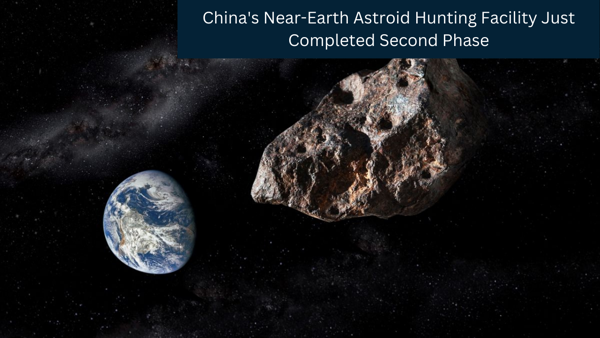
Science & Space
A Closer Look At China's New Asteroid Detection System, Which Has Just Completed Its Second-Phase: What It Is All About?
China is building a deep-space observatory facility to detect Near-Earth Objects(NEO), codename China Fuyan, in the country's southwest Chongquing municipality area.
The facility included distributed radars with more than 20 antennas, each with a diameter of 25 to 30 meters. According to the project's lead organizer, the Beijing Institute of Technology, the antennas would team up to conduct high-definition observation of asteroids within 150 million kilometers.
According to Long Teng, president of the Beijing Institute of Technology, the project has been named China Fuyan because it has numerous antennas, similar to the faceted eyes of an insect.
The project is being developed in collaboration with multiple organizations: The Beijing Institute of Technology, China's National Astronomical Observations under the China Academy of Sciences, Tsinghua University, and Peaking University.
Chia is developing this ground and space-based asteroid monitoring system to catalog and analyze asteroids that may pose a threat to human space activities in space, primarily to protect the Tiangong space station and other active assets of China's military, navy, air force, and civilian satellites.
This facility's purpose is simple but complicated. The new facility, along with its radars and antennas, will aid the country's exploration of space and the path between Earth and the Moon, as well as its search for a suitable landing site for the Tianwen-2 space probe.
Tianwen-2 is scheduled to launch in 2025 on a Long March 3B rocket to collect samples from asteroids and data on comets before returning to Earth. The project is currently in the works.
Tainwen-2's primary mission will be to conduct observations and return samples from the near-Earth asteroids 2016HO3 over the course of a decade. In 2016, the planet's "constant companion" was named 2016HO3. Kamo'oallwa is another name for the target asteroid.
According to scientists, the object could be a moon fragment that was blown off the Earth millions of years ago, supposedly at the beginning of the solar system.
Stages of the facility:
The observation facility is being built in three stages. In the first phase, four 54-foot-diameter (16-meter) radars have already been installed in southwest Chongqing.
Chinese scientists tested the first phase of the project's technological feasibility by sending signals to the moon.
Following the completion of the first phase, Chinese authorities have just finished the second phase by constructing 25 reader antennas with a diameter of 98 feet (30 meters). Last December, the entire second phase of work was completed.
With the completion of the second phase, the country has been able to observe asteroids with diameters as small as a dozen meteors, 10 million kilometers, or 6.2 miles from Earth.
The third phase of this project is critical because once completed, scientists will be able to detect asteroids 90 million miles (150 million kilometers) away from Earth. The project will work in conjugation with multiple smaller antenna arrays to simulate a large aperture system to allow deep-space detection.
China is also working on a project similar to NASA's DART Misson to track and deflect near-earth objects(NEO).
China is also planning to send multiple objects to other celestial bodies in the solar system with the help of this project. Chinese are planning to send objects to Venus, Mars, and others.
Expert Opinion about this system:
China Fuyan will perform high-resolution observations of asteroids, spacecraft, the moon, earth-like planets, Jupiter's Galileo satellites, and other deep space targets to meet the need for near-Earth asteroid defense and situational awareness in space.
The project will also play an important role in the study of Earth's habitability, planet formation, and other cutting-edge scientific research.
NASA, on the other hand, is working on much more advanced projects to detect near-Earth objects (NEOs) from space using the Near-Earth Object Surveyor using infrared. The project is set to be launched in 2026 with the goal of detecting potentially hazardous asteroids and comets that pass within 30 million miles of Earth's objects.

0 Comments